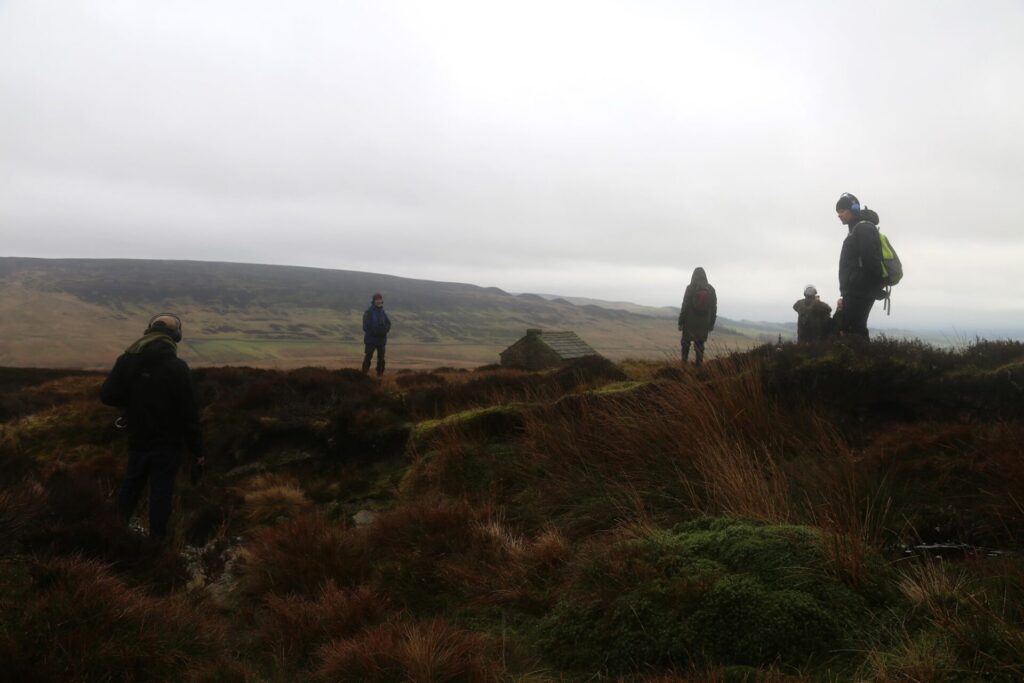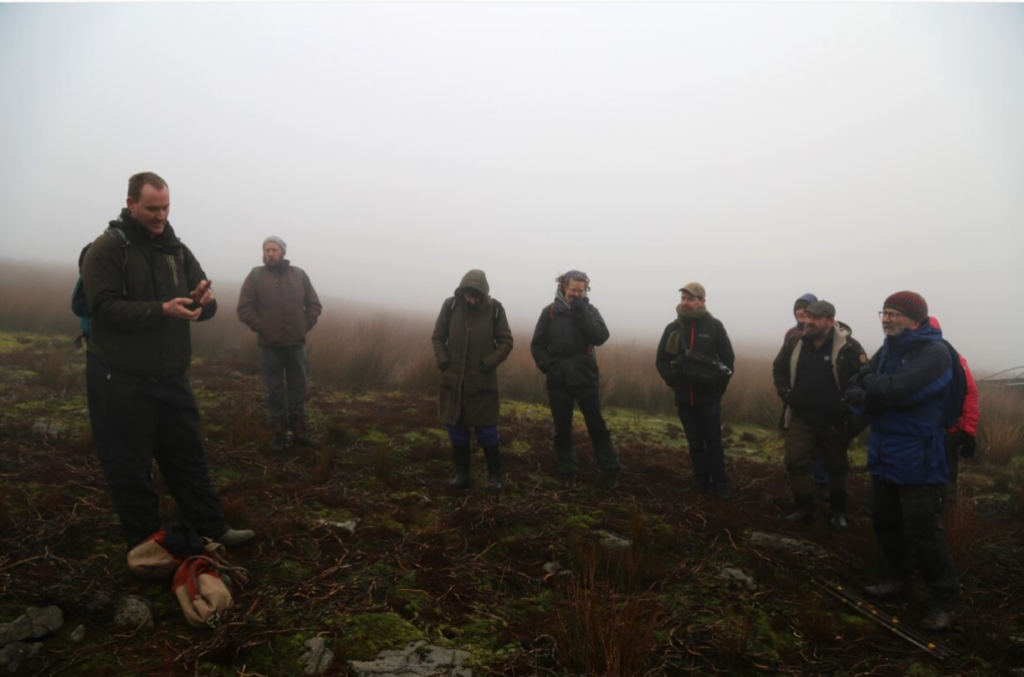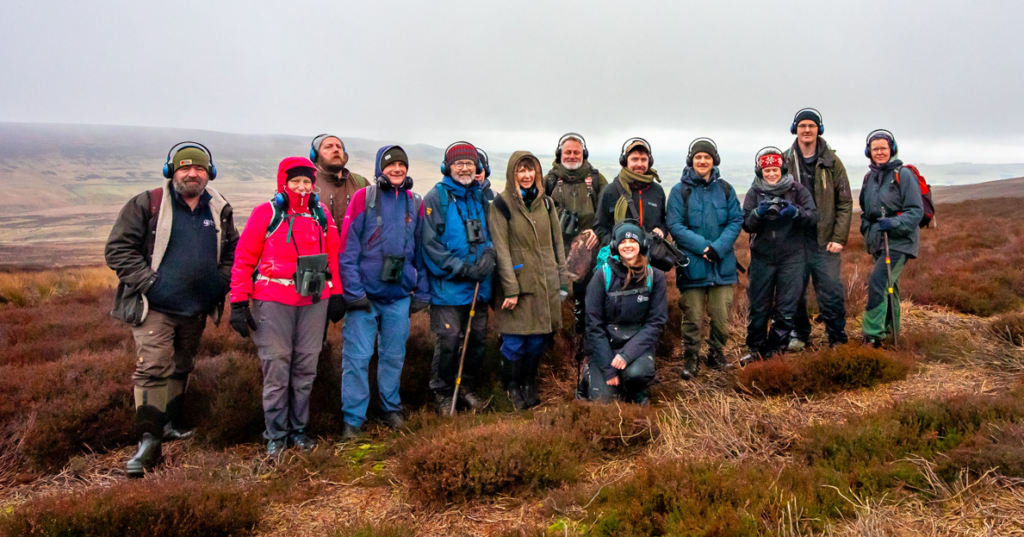
Pictured: Listening event – photo by Laura Harrington
Last weekend (Saturday 17 February) Laura Harrington took part in a peat coring and ‘listening walk’ event with Durham Wildlife Trust, site lead Rebecca Clarke, sound artist Tim Shaw, Dr Antony Blundell from University of Leeds and Josh Cohen at St Cuthbert’s Moor Nature Reserve in Durham.
Coming up with the concept for the event
The origins of this event go back at least half a year to the series four peat-coring workshops which WaterLANDSUK hosted across the Great North Bog region in the summer of 2023.
During the Northumberland workshop, Laura and I were both struck by the power of the simple act of peat coring, able to almost cut through the noise of contemporary human opinion about peatland management; alongside Antony’s ability to bring cores of ‘dead’ organic material to life in fascinating, precise and knowledgeable ways.
When Rebecca from Durham Wildlife Trust, approached WaterLANDSUK in search of an engagement activity, we wondered about the possible resonances between the ’deep seeing’ of peat coring, and the different forms of ‘deep listening’ we’d both had an interest in. Over the following months, Antony, Rebecca, Laura, Tim, and myself came together to discuss the practicalities, possibilities and opportunities offered by such an event. It felt like a good example of the types of shared learning across peaty disciplines and approaches that WaterLANDS is making possible. During the event itself, this shared learning was opened out to the general public. The event was fully booked which was great.
And so it was that on a relatively warm but very misty day, a group of 15 took a short walk up the hill to the site’s deeper peat. Along the way, both Rebecca and Antony shared insights into the condition of the peatland and some of the known history of its management.
Peat coring – Our audience was enthralled
Once we had reached our destination, Antony discussed peatland shifts over centuries and millennia, touching on a range of topics, from biodiversity, to land management and palaeoecology’s role in informing restoration decisions. All of this made extremely clear the long entanglement of the lives and fates of people and peatlands. Using a Russian Peat Corer, Antony took a couple of sample cores from the peatland, and offered interpretations of what we were seeing. Our audience was enthralled and had plenty of questions and comments. There was a lot of interest in the fact that, because of the acidic anaerobic conditions in peatland, we may well have been looking at moss which died 500 years ago, but which looked like it could have been alive last week!
Sound walk – It’s like binoculars for the ears
On the walk down the hill, Tim, with his specialized equipment in-hand, led a sound walk using alternative microphones which caught and amplified normally unheard environmental sounds. One participant described this as ‘binoculars for the ears’ – a very apt description. With the headphones on, you could experience loud and clear which you might normally only faintly hear so that you became drawn into the environment in a fascinating, almost meditative way. A babbling stream, the crunch of heather stems left by a controlled burn, the rustling of jackets, booted feet in the boggy ground.
At the bottom of the hill, by the little bothy, with our headphones now off, Laura read the group a segment from her peaty book ‘Fieldworking’. For me, this echoed and helped to articulate our recent intellectual, embodied, visual and auditory experiences of our inextricable interwovenness with peatlands. The final line she read sticks in the memory, asking a question about what we mean when we say ‘the environment’.
Listening to the bog – and the bog also listens to us
The idea that we not only listen to the bog, but that the bog also listens to us, is both a fascinating and compelling one.
Over coffee and cake in and around the bothy, we all reflected together on the day. For me, it stimulated valuable thoughts about how ‘art’ and ‘science’ – I prefer to think in terms of differing ways of attending to the world – might further complement each other in taking forward urgent peatland conversations.


Pictured: Peat coring – photo by Laura Harrington
Pictured: Group taking part in the Sound Walk – photo by Antony Blundell
